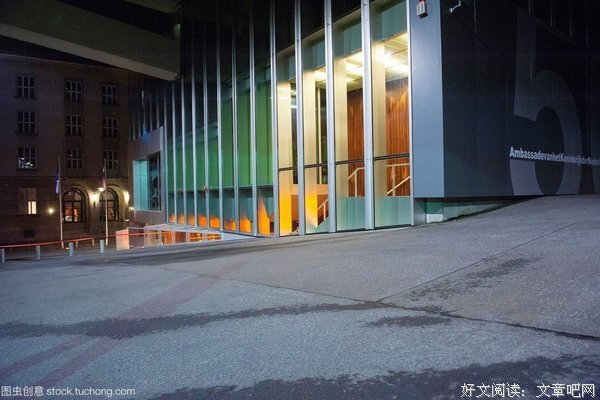
《雷姆·库哈斯:一种建筑师》是一部由Markus Heidingsfelder / Min Tesc执导,Rem Koolhaas主演的一部纪录片类型的电影,特精心从网络上整理的一些观众的观后感,希望对大家能有帮助。
●AMO
●电影的形式也很棒。
●markus
●
●应该算是最喜欢的一部建筑师纪录片了。比他儿子拍那部好看和解读性更强,全程生肉看完,从库哈斯的毕业设计Exodus到Delirious New York,然后创立OMA和AMO再到介绍各类建筑(相当大的篇幅讲了cctv,穿插各类合伙人和建筑师的访问。大部分时间都从侧面去体现库哈斯并没有直接从建筑师身份切入。整部片充满了OMA鲜明的collage和poor taste,也难怪库哈斯自称最喜爱的一部纪录片。(再次吐槽荷兰人的英文
●看完突然想去amo工作。今年好好读一下rem的书吧,绕不过的三座大山
●已对俊俏的奥雷舍人路转粉
●经典oma
●kukuku
《雷姆·库哈斯:一种建筑师》观后感(一):教父 库哈斯
叙述的不错,是库哈斯认同介绍自己的一部电影。介绍库哈斯的职业的一个经历,以及之前从事的记者行业及拍摄电影过程中所积累的养分,对之后对建筑的理解有一种冷静的方式。电影拍摄手法也用了类似拼贴的方式,对其中一个片段很深,库哈斯在讲解自己的理论,奥雷舍人,迈耶等都做认真听讲思索状,可能他们被单独采访的过程中听的并不是库哈斯在讲的这段话,然后通过拼贴剪辑而成就比较戏剧的效果。
《雷姆·库哈斯:一种建筑师》观后感(二):癫狂的纽约,库哈斯
这一年都很迷库哈斯。一半一半看完了全片。没有翻译挺不方便的,间接英文字幕,掺杂荷兰口音英语。片子前大部分的内容,在唐克扬老师翻译的《癫狂的纽约》后记中都有。后面更多是一种案例的讲解与分析。Foster之前是空军工程师,Zaha之前学数学画康定斯基的解构,喜欢库哈斯的一点很合我心意,他之前是记者,干过电影行业。这种人文背景,另他的设计表达有一种令人着迷的艺术性。波普艺术的拼接、俏皮、复古,停顿的帧,像是电影画面。同时他又是一个出人意料的理想者,可他并不天真。努力做好一切,成为一个全球性的事务所。
《雷姆·库哈斯:一种建筑师》观后感(三):关于库哈斯
《Rem Koolhaas:A Kind Of Architect》在电脑里存了半年的片子,终于在从曼城回巴黎的飞机上看完了,当然也成为那台电脑与我最后的日子。影片通过库哈斯如何成为一名建筑师为轴线,整合影响过他的人与事从侧面抛售其建筑思想。
其中自然不乏开辟现代主义建筑的那些始祖人物,比如密斯,比如赖特。
但感觉最能体现其思想依然是更符合其生足年代的那些个重大事件:情境主义,全景敞视主义(在20世纪中期被重新发现与阐释)及柏林墙的建筑性。
尤其是影片谈及柏林墙的那段,很有一种豁然开朗的感觉,这种其着绝对隔绝左右的墙体,通过完全的封闭实现了其建筑性,以至于分别处于两边的人都想去另一边,并奢望着另一边的乃是真正的理想社会(场所)。而通过这样的概念,似乎所有库哈斯那些试图与城市肌理割裂的projets都得到了某种理论意义上的支持。
而波尔图的casa di musica则是有点情境主义里,不同城市肌理superposition的感觉,将里斯本山地蜿蜒的肌理重叠在波尔图上。
全景敞视主义被用在cctv tower上,这种史于19世纪监狱的功能性布置,跨越2个世纪,用于象征21世纪的极权国家,虽然多少有点调侃的味道,不过也算是相似的语境吧。
诚然,20世纪现代主义百花齐放,可能想库哈斯这样一直努力建立自己的理论与拙见的确实在不多。不管你对其作品是否感冒,这都是一部建筑乃至设计从业者不得不看的作品吧。
《雷姆·库哈斯:一种建筑师》观后感(四):库哈斯的建筑哲学
整体干货比较多,涉及库哈斯具体的职业经历与设计哲学。
无字幕纪录片配上库哈斯浓重的荷兰口音让观看变得愈加困难。尝试做一些文字稿的整理:
quot;Koolhaas started out as a journalist for a conservative-liberal paper. He was more or less a lifestyle journalist. Koolhaas was good at writing, and he was also interested in writing. His father was a prominent author in the Netherlands. Anton Koolhaas, the narrator."
quot;Like many others at the Haagse Post, Rem Koolhaas went on to do something else. He got involved in making films. He wrote screenplays and was part of a group of Dutch filmmakers among with Rene Daalder, and today well known Jan de Bont, Robby Muller, who was Wim Wenders' cameraman, and a couple of others."
quot;I think the two professions, screenwriter and architect, are very close, because for both you have to consider a plot, develop episodes, and you have to create montages that make it interesting..."
“His father a writer, his grandfather an architect. Koolhaas becomes both. An architect who writes, and a writer who builds.”
quot;The reason he decided to go for architecture could well be his encounter with Constant, whom Koolhaas interviewed for the Haagse Post in 1966. Constant, originally a painter, had become a member of the Situationists. For them, criticising urbanism was the key to criticising life in general. Their sphere of activity: 'The city's grid as the natural expression of a collective creativity.' Their goal :'to reintroduce adventure in urban centres. To maximize public spaces. To see architecture as a means to insight and action, as the simplest means to modulate reality, to make it dream.' To attain this goal, Constant developed the concept of the covered city. Instead of isolated housing units and minimal social space, Constant pleads for a total condensation. Instead of dividing streets and buildings, he wants a continuous spatial construction, which contains groups of spaces as well as public spaces, a city of diversity that consists of a diversity of labyrinthine passages, an architectonic utopia that bears the name 'New Babylon'. Koolhaas decided to imitate him. To test possibilities for existing cities, and make models and plans for future cities. To maximize public spaces and modulate reality."
quot;A beautiful thing about architecture is of course that it is always 'used'. There is no architecture inaccessible in a way, and in that sense architecture gets very unique. Movies can be inaccessible, music can be inaccessible, plays can be inaccessible, but architecture cannot be inaccessible. So in a certain way, ... medium that has been used (实在听不太清楚...) is one of the last connections to morality. That is perhaps the incentive for me to shift from screenwriting to architecture."
“To him, the Berlin Wall isn't a boundary or demarcation line. To him, it's architecture. He describes how a city is divided into a good and a bad part. The good part is walled with the result that everyone in the bad part wants to go to the good part. This therefore confirms the principle: Build a wall and everybody will think that there's a great party on the other side. A collective space that paradoxically enough is characterized by freedom. He applied this to a vision which he unfolded for London in his study Voluntary Prisoners. Build a big wall in the middle of the city, and make a clear division and hierarchy in the urban area. Create an exclusive zone in the middle for a collective that feels itself to be free within this zone. The consequence will be that the rest of the city's inhabitants want to enter that zone. In his vision of London, his utopia, or rather dystopia, the rest of London becomes desserted. It becomes an empty ruin, a wasteland. The people in the compact, the walled-up zone, are perfectly happy. This is of course a totalitarian fantasy, which neverthelss is an important pivotal point with Koolhaas: Cities grow rampant in all directions, into the slums. There's no clear image of the city anymore. It lacks clear outlines. He approves of this and wants to make something new emerge from the chaos. At the same time, he tries to mark out moments in that chaos, mark out zones and create plains for public spaces, as well as landmarks.”
截止到00:16:43,未完待续...